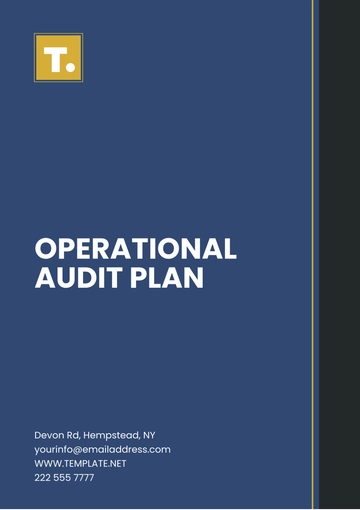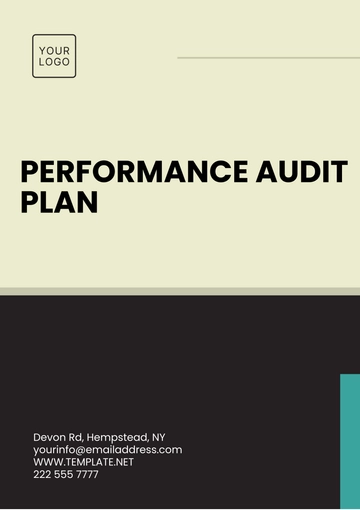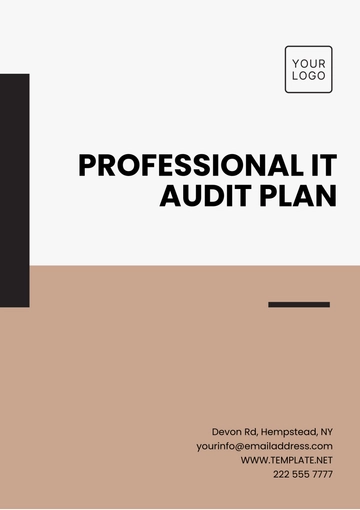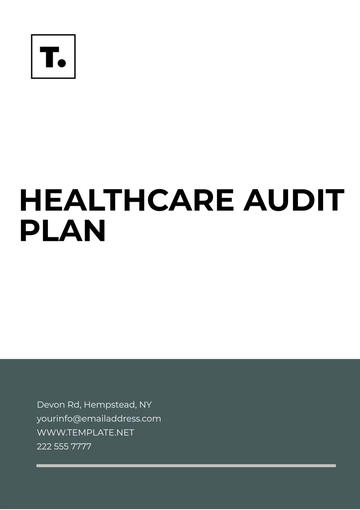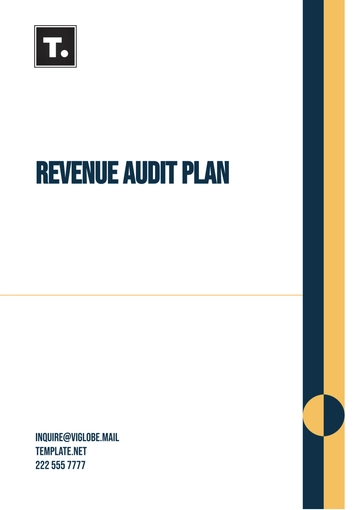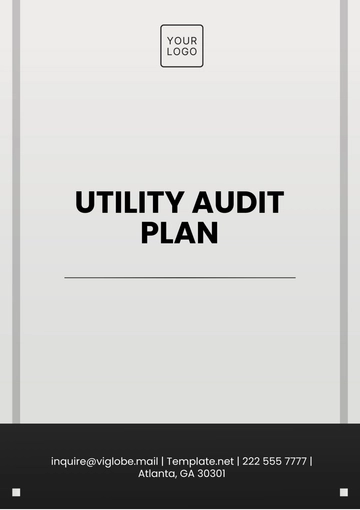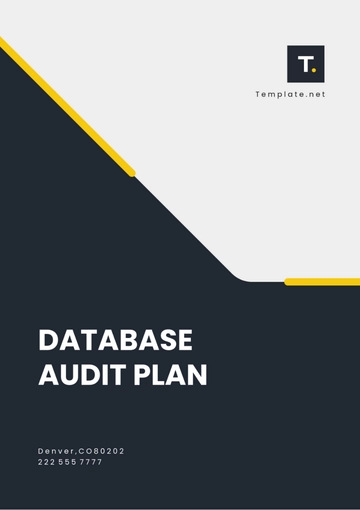Free Administration Legal Compliance Audit Plan

I. Introduction
The Administration Legal Compliance Audit Plan highlights the importance of understanding legal compliance in terms of administrative operations within [Your Company Name], adhering to internal policies, and following through with statutory regulations. This plan underpins the overall goal of preventing legal issues, reducing risk and continually improving the administrative compliance processes.
II. Objectives
Our fundamental objectives are based upon a set of ideas that pledge to ensure full legal compliance. In addition, one of our core objectives is to establish a risk matrix that is both reliable and easy for everyone to understand and follow. We are also devoted to the improvement and enhancement of the training process, specifically when it comes to legal awareness as we believe this is an essential component in any organization such as [Your Company Name].
Implementing efficient audit trails forms part of this main objective, as it allows for thoroughness and precision during evaluations. Lastly, we are committed to providing regulatory insights which are aimed to contribute to a better implementation of industry regulations within the firm. These insights are derived through the continuous and relentless assessment procedures we have set in place.
III. Scope of the audit plan
The audit that is scheduled to take place is comprehensive in nature and is intended to encompass every sector of the administration. These include essential areas such as the legal policies that guide the functioning of the administration, sharply defined protocols that frame pursuit of specific objectives, agreements made in the form of contracts, documentations which record all official transactions and interactions, as well as the processes which define the order and method of work flow within the administration. Given the exhaustive nature of this audit, it will help in guaranteeing that all set norms and regulations are being adhered to thereby ensuring full compliance. Furthermore, it will also aid significantly in the strategized reduction of risks through mitigation. Thereby, it serves as a potent tool for continuous improvement, enabling the administration to constantly evolve and refine the way it functions.
IV. Compliance Audit Team
The team that has been assembled includes members with varied professional backgrounds including legal compliance auditors, who are tasked with vigilantly verifying adherence to legal requirements; legal consultants, who provide expert advice on legal matters; internal audit personnel, who carry out systematic review of the organization's operations and adherence to processes; and representatives from the administration department, who bring with them an in-depth knowledge of administrative practices. Acting as a collective unit, this team is dedicated to ensuring that every aspect of administrative legal compliance is exhaustively inspected and any areas needing enhancement are effectively improved upon.
V. Risk Analysis and Assessment
Risk Category | Potential Risk | Mitigation Strategy |
|---|---|---|
Regulatory Compliance | Non-compliance with laws and regulations | Regular updates on laws, Policies revision, Mandatory compliance training |
Contractual Compliance | Invalid contract signing | Contract review, Legal consultation |
Documentation | Incorrect or inadequate documentation | Standardized documentation process, Regular reviews |
Policy Adherence | Non-adherence to internal policies | Regular training, policy reminders |
Data Confidentiality | Breach of confidentiality | Data protection measures, Confidentiality agreements |
VI. Audit Methodology
The strategy we utilize in our audit process encompasses several components. First and foremost, we commence with a thorough review of all pertinent documents. This is followed by a comprehensive risk assessment, where we gauge potential issues and complications. Thereafter comes the stage of compliance testing, this aspect ensures adherence to all relevant laws, standards, and policies. The sequence concludes with detailed reporting of our findings. However, these are not disjointed stages, our focus is on ensuring a comprehensive and integrated process.
In addition to these, regular and scheduled meetings with all the important stakeholders are of the utmost importance to us. This frequent interaction not only enables transparency but also ensures that there is fluid and effective communication at all stages of the audit process. Our aim is to keep all relevant parties informed and engaged throughout, fostering an environment of collaboration and trust.
VII. Compliance Training
An essential cornerstone of this plan is deeply rooted in training. The primary objective is to arm employees with the necessary tools and knowledge for their job roles via meticulously curated compliance programs. These programs aim at fostering a deeper comprehension of the policies that govern their work, the pertinent laws they must adhere to, as well as the specific regulatory requirements that characterize their respective fields. Moreover, the responsibility for constant learning will be firmly placed on their shoulders as it is pivotal that they keep up with the dynamics of the regulatory landscape that inevitably experiences perpetual shifts and changes.
VIII. Monitoring and Reporting
In order for this plan to be successful, the implementation of continuous monitoring is fundamentally important. This is because it permits us to identify any issues relating to non-compliance at an early stage and subsequently take corrective measures in a prompt manner. As a part of this ongoing monitoring process, we will provide the management with regular reports which will include detailed information about audit findings. Furthermore, these reports will elucidate the potential implications of these findings, offer recommendations based on them, and lay out a clear plan of actions going forward.
IX. Audit Review
In order to evaluate the effectiveness and the efficiency of a particular plan, a post-audit review will be undertaken. This detailed review will look into various aspects of the plan and critically analyze whether it's achieving its desired outcomes and doing so in an efficient manner. Additionally, this preliminary review process will implement a systematic way of handling any changes that might occur.
Therefore, if any adjustments in the internal processes, modifications to the existing regulations, or shifts in the broader business environment are observed, this will inevitably lead to corresponding alterations to the plan currently being audited. These changes will be thoughtfully incorporated into the plan to ensure it continues to be relevant and effective in achieving its goals under the new circumstances. Therefore, the audit plan will remain a living document, continually adapted to ensure that it maintains its applicability and effectiveness within an ever-changing business climate.
X. Plan Modification
Considering that legal compliance is a dynamic concept which frequently changes based on various factors, it is vital to ensure that the Audit Plan is not left static or outdated. To ensure this, it is essential that it experiences regular updates and modifications that will keep it aligned to the most recent changes in the sector. This consistent updating and modification of the Audit Plan will guarantee that it is always in tune with any new developments or changes. These changes could be adjustments in legislation, shifts in industry best practices, or enhancements within the organization. Staying up-to-date with these changes ensures that the plan remains relevant and effective.
Prepared By: [Your Name], [Your Job Title]
Date: [Month, Day, Year]
- 100% Customizable, free editor
- Access 1 Million+ Templates, photo’s & graphics
- Download or share as a template
- Click and replace photos, graphics, text, backgrounds
- Resize, crop, AI write & more
- Access advanced editor
Introducing the Administration Legal Compliance Audit Plan Template from Template.net. This essential tool ensures your organization meets all legal standards. Fully customizable and editable with our Ai Editor Tool, it's designed to streamline your compliance process efficiently. Tailor it to fit your specific needs and maintain impeccable legal standing effortlessly with Template.net.
You may also like
- Finance Plan
- Construction Plan
- Sales Plan
- Development Plan
- Career Plan
- Budget Plan
- HR Plan
- Education Plan
- Transition Plan
- Work Plan
- Training Plan
- Communication Plan
- Operation Plan
- Health And Safety Plan
- Strategy Plan
- Professional Development Plan
- Advertising Plan
- Risk Management Plan
- Restaurant Plan
- School Plan
- Nursing Home Patient Care Plan
- Nursing Care Plan
- Plan Event
- Startup Plan
- Social Media Plan
- Staffing Plan
- Annual Plan
- Content Plan
- Payment Plan
- Implementation Plan
- Hotel Plan
- Workout Plan
- Accounting Plan
- Campaign Plan
- Essay Plan
- 30 60 90 Day Plan
- Research Plan
- Recruitment Plan
- 90 Day Plan
- Quarterly Plan
- Emergency Plan
- 5 Year Plan
- Gym Plan
- Personal Plan
- IT and Software Plan
- Treatment Plan
- Real Estate Plan
- Law Firm Plan
- Healthcare Plan
- Improvement Plan
- Media Plan
- 5 Year Business Plan
- Learning Plan
- Marketing Campaign Plan
- Travel Agency Plan
- Cleaning Services Plan
- Interior Design Plan
- Performance Plan
- PR Plan
- Birth Plan
- Life Plan
- SEO Plan
- Disaster Recovery Plan
- Continuity Plan
- Launch Plan
- Legal Plan
- Behavior Plan
- Performance Improvement Plan
- Salon Plan
- Security Plan
- Security Management Plan
- Employee Development Plan
- Quality Plan
- Service Improvement Plan
- Growth Plan
- Incident Response Plan
- Basketball Plan
- Emergency Action Plan
- Product Launch Plan
- Spa Plan
- Employee Training Plan
- Data Analysis Plan
- Employee Action Plan
- Territory Plan
- Audit Plan
- Classroom Plan
- Activity Plan
- Parenting Plan
- Care Plan
- Project Execution Plan
- Exercise Plan
- Internship Plan
- Software Development Plan
- Continuous Improvement Plan
- Leave Plan
- 90 Day Sales Plan
- Advertising Agency Plan
- Employee Transition Plan
- Smart Action Plan
- Workplace Safety Plan
- Behavior Change Plan
- Contingency Plan
- Continuity of Operations Plan
- Health Plan
- Quality Control Plan
- Self Plan
- Sports Development Plan
- Change Management Plan
- Ecommerce Plan
- Personal Financial Plan
- Process Improvement Plan
- 30-60-90 Day Sales Plan
- Crisis Management Plan
- Engagement Plan
- Execution Plan
- Pandemic Plan
- Quality Assurance Plan
- Service Continuity Plan
- Agile Project Plan
- Fundraising Plan
- Job Transition Plan
- Asset Maintenance Plan
- Maintenance Plan
- Software Test Plan
- Staff Training and Development Plan
- 3 Year Plan
- Brand Activation Plan
- Release Plan
- Resource Plan
- Risk Mitigation Plan
- Teacher Plan
- 30 60 90 Day Plan for New Manager
- Food Safety Plan
- Food Truck Plan
- Hiring Plan
- Quality Management Plan
- Wellness Plan
- Behavior Intervention Plan
- Bonus Plan
- Investment Plan
- Maternity Leave Plan
- Pandemic Response Plan
- Succession Planning
- Coaching Plan
- Configuration Management Plan
- Remote Work Plan
- Self Care Plan
- Teaching Plan
- 100-Day Plan
- HACCP Plan
- Student Plan
- Sustainability Plan
- 30 60 90 Day Plan for Interview
- Access Plan
- Site Specific Safety Plan






